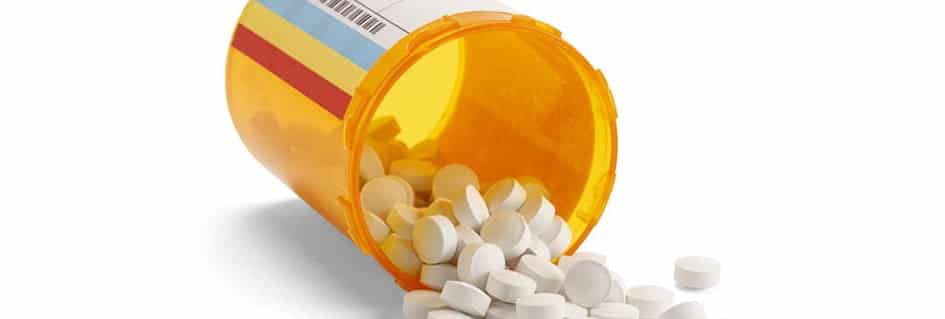It's clear that the war on drugs has shifted away from the back alleys and instead on to Main Street. Abuse of prescription medication has grown to a bona fide public health crisis.
Excerpts of the article by F. Leland McClure, Occupational Health & Safety
Drug use and abuse is not a recent phenomenon. Marijuana, opiates, and hallucinogenic drugs have been used for centuries around the world and in the United States. In 1971, the U.S. officially declared its "war on drugs."1
In this first front in the drug war, prescription drug abuse and misuse was not a primary concern of drug abuse prevention advocates. That has since changed. In the 1990s, opioids—which had seldom been used for pain management due to concerns over addictive potential and diminishing therapeutic value—were increasingly prescribed for chronic pain.2 Since then, prescription opioid use has escalated dramatically and dosage has increased. In 2000, 174 million prescriptions for opioids were dispensed; by 2009, that number had increased to 257 million, an increase of 48 percent.3 From 1997 to 2007, the milligram per person use of prescription opioids in the United States increased from 74 milligrams to 369 milligrams, an increase of 402 percent.4
Prescription opioid use has escalated dramatically and dosage has increased.
More worrisome than increases in the use of prescription medication is its misuse. Data indicate that, despite declines, 6.1 million people used prescription medication non-medically in the past month in 2011.5 Shockingly, overdose deaths from prescription painkillers have quadrupled since 1999 and now exceed deaths from heroin and cocaine combined.6
Given these dynamics, it's clear that the war on drugs has shifted away from the back alleys and instead on to Main Street. Abuse of prescription medication has grown to a bona fide public health crisis, causing the Centers for Disease Control and Prevention to classify prescription drug abuse as an epidemic.7
Abuse of prescription medication has grown to a bona fide public health crisis.
Prescription drug misuse impacts individuals in every age group, of both genders, and across a broad socioeconomic strata. Over the past three years, a series of reports have been released detailing the extent of the crisis based on our database of de-identified testing data from across the United States.8 Among the findings from the 2014 report was that the majority (55 percent) of Americans misused their prescription medications in 2013. Forms of misuse ranged from mixing prescribed medications with illicit drugs to skipping doses of prescribed medication altogether.
Prescription drug misuse is now as serious, or perhaps even more serious, than the abuse of so-called illicit drugs. To counter these trends, we should recognize that some of the tools that have worked in the past to combat the use of illicit drugs may not be the best solution to fight this new front of drug abuse.
Focusing on limiting access to certain narcotics is too narrow of an approach—and, worse, may carry negative ramifications for those individuals who legitimately need medication to control pain. This is especially important because we must not demonize prescription painkillers. More than 100 million Americans suffer from pain, including those who suffer from acute, debilitating pain.9 For many individuals, prescription pain medication is a necessary and critical component in their pain management regimen.
Education that stresses the health dangers of inappropriate use of all types of drugs is more likely to be effective. In fact, there are signs that suggest that current efforts may be working. Although our 2014 report showed that medication misuse remains very high, we also found that the rate of misuse, as determined by drug test results, declined by 8 percent from 2011 to 2013, suggesting that physicians may be doing a better job communicating about the importance of adherence to a prescription drug regimen and/or that patients are exercising better prescription drug compliance. This data also supports National Survey on Drug Use and Health research which shows that in 2011, illicit use of prescription drugs declined for the first time in more than two decades.
Physicians may be doing a better job communicating about the importance of adherence to a prescription drug regimen and/or that patients are exercising better prescription drug compliance.
Our analysis also provided directional guidance on the types of clinical, technological, and policy strategies that can help curtail the prescription drug epidemic:
- Adopt regulations to reduce potential abuse. As of October 2014, more than 65 prescription medications containing hydrocodone, the most widely prescribed painkiller, were subjected to new, stricter federal prescribing rules. The new regulations recommended by the Food and Drug Administration and published by the U.S. Drug Enforcement Administration made medications that contain opioid subject to the same restrictions as other narcotics, such as oxycodone and morphine.10 This is an example of how intelligent regulations may help reduce the likelihood that patients become addicted to powerful narcotics.
- Leverage the power of healthcare technology to empower better care. The industry now has mobile apps that track medications and remind individuals to take pills in accordance with clinician directives. But there is also growing utilization of more sophisticated health IT tools that help physician group administrators and health plans to identify clinicians who appear to be outside the norm in prescribing pain medications and patients who appear to have inappropriate utilization.
There is much we can do to ensure that prescription drugs foster good health, not harm, for our patients.
Musculoskeletal conditions are the single largest, fastest growing, and most expensive segment of healthcare. DORN delivers an on-site pain prevention intervention program to treat employees who have painful muscular conditions. Research studies clearly show our system and techniques save employers significant healthcare dollars while, at the same time, giving quick, safe, effective, and lasting pain relief to employees. A University of California study found that the DORN Pain-Free™ program reduced employee pain levels by 57% and reduced medication/prescription levels by 40%. Contact us if you are ready for a proactive approach to reduce prescription drug use for your employees with muscular pain.
References
- http://www.drugpolicy.org/new-solutions-drug-policy/brief-history-drug-war
- Rational Use of Opioids for Management of Chronic Nonterminal Pain, Daniel Berland, MD, and Phillip Rodgers, MD, University of Michigan Medical School, Ann Arbor, Michigan, Am Fam Physician. 2012 Aug 1;86(3):252-258
- http://www.whitehouse.gov/ondcp/prescription-drug-abuse
- http://www.drugabuse.gov/related-topics/trends-statistics/infographics/popping-pills-prescription-drug-abuse-in-america
- http://www.cdc.gov/mmwr/preview/mmwrhtml/mm6043a4.htm
- http://www.whitehouse.gov/ondcp/prescription-drug-abuse
- http://www.questdiagnostics.com/home/physicians/health-trends.html
- Institute of Medicine Report from the Committee on Advancing Pain Research, Care, and Education: Relieving Pain in America, A Blueprint for Transforming Prevention, Care, Education and Research. The National Academies Press, 2011.
- http://www.deadiversion.usdoj.gov/drug_chem_info/hydrocodone.pdf
This article was originally published by Occupational Health & Safety. You can see the original article here: https://ohsonline.com/Articles/2015/09/01/Prescription-Drug-Misuse-Epidemic.aspx?Page=1


